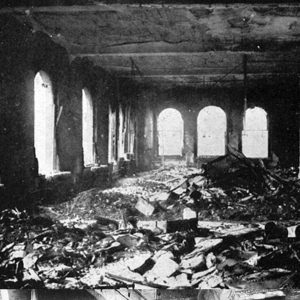Safety Milestones Since the Triangle Shirtwaist Fire
March 25, 2021, was the 110th Anniversary of the Triangle Shirtwaist Fire – a tragic incident that elevated the workplace safety concerns of garment industry workers and workers in other manufacturing jobs to a point of no return. The Triangle Shirtwaist Fire led to the creation of agencies and multiple reforms dedicated to workplace safety. Some reforms began in the days and months that immediately followed the fire while other reforms took years and decades to appear.
Oct. 14, 1911: The Founding of the United Association of Casualty Inspectors
The United Association of Casualty Inspectors was founded as a direct response to the Triangle Shirtwaist Fire. According to ASSE, the organization started with 62 members. In 1914, the Association changed its name to American Society of Safety Engineers, and it still operates under that name to this day.
 As of 2011, the Society states it has 32,000 members who “supervise and consult on safety, health, and environmental issues in industry, insurance, government and education.” ASSE also maintains multiple American National Standards Institute (ANSI) committees and projects. The initiatives of ASSE have helped businesses reduce costs by providing a safer workplace environment which, in turn, helps reduce workplace injuries that lead to downtime, workman’s compensation claims and higher turnover rates.
As of 2011, the Society states it has 32,000 members who “supervise and consult on safety, health, and environmental issues in industry, insurance, government and education.” ASSE also maintains multiple American National Standards Institute (ANSI) committees and projects. The initiatives of ASSE have helped businesses reduce costs by providing a safer workplace environment which, in turn, helps reduce workplace injuries that lead to downtime, workman’s compensation claims and higher turnover rates.
1911-1921: Worker’s Compensation Laws Take Off
New York state passed the first worker’s compensation law in 1910, according to EH.net. While the workman’s compensation model had long been studied by businesses, it did not have the support of Samuel Gompers, president of the American Federation of Labor, or a variety of other members (Department of Labor).
However, in 1909 the AFL switched channels and began to back the program. At the same time, companies like International Harvester had begun to create their own compensation models and supported laws that would ensure all companies, large and small, were supported. By 1921, 46 jurisdictions in the country had workmen’s compensation laws on the books.
1934: Voluntary Health Insurance Appears
A National Institutes of Health document titled “Voluntary Health Insurance on the National Scene: The Program of the Insurance Companies” dated the initial offerings of “experiments with group hospital expense insurance” as launching in 1934, which was right on the heels of the Blue Cross movement originating in 1929 (Blue Cross Blue Shield). At this point in history, group insurance plans could be issued to employers, unions and trustees of a welfare benefit fund.
1955: The Emergence of the Industrial Hygienist
According to EHSToday, a 1955 “Occupational Hazards” article chronicled that the previous 10 years had seen industrial hygiene become a major concern. Many companies and large businesses employed health technicians who assessed everything from cafeteria cleanliness to the common cold. Most health technicians did not have initial input related to safety practices within the manufacturing process, but some specialists like Fred Manuele, an ASSE Fellow (ASSE), state that by the end of the 1950s “a lot of good” practices were put into place.
 1970: The Formation of the Occupational Safety and Health Administration (OSHA)
1970: The Formation of the Occupational Safety and Health Administration (OSHA)
OSHA was launched in 1970 after several years of rising on-the-job fatalities and workplace injuries. Throughout its 40-plus years of existence, OSHA has worked to ensure safe and healthy working conditions for American workers. The Administration sets and enforces standards and also offers training, education and assistance to companies of any size. OSHA’s Free On-Site Consultation Program helps ensure even small businesses have a safe and product-healthy environment for their employees (OSHA Small Business).
Workplace health and safety has improved almost immeasurably since the Triangle Shirtwaist Fire of 1911 through a mixture of business, government and organizational changes.
